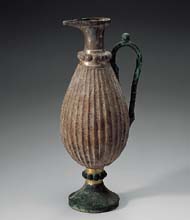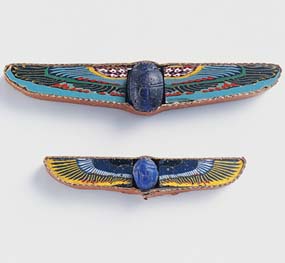 Winged Scarabs (Figure A) Egypt, 1st century B.C. to 1st century A.D. Glass As symbols of the sun god, these winged beetles served as funerary objects that were buried with the dead. |
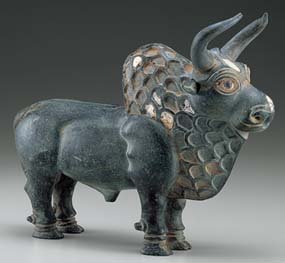 Male zebu Western Central Asia, 3000 B.C. Bulls, respected for their powerful horns and great strength, were considered sacred and associated with prayers to the earth’s life force and to water. |
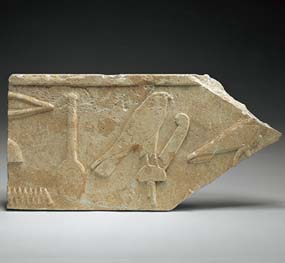 Relief with Hieroglyphs Egypt, Old Kingdom, 2454–2311 B.C. Limestone The ancient Egyptians believed that the spirit of the dead lived in the west, where the sun sets. The sun, which rises in the east and sets in the west, represented the eternal cycle of life and death, sets. |
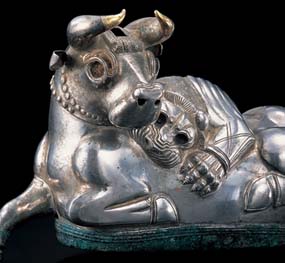 Vessel with a bull attacked by a lion Western Iran, 8th to 7th century B.C. Silver Images of a fighting lion and bull, symbols of the sun and the moon, represented ceremonies of the vernal equinox as winter changed to summer, in which the abundant revival of life in the new year was anticipated. |
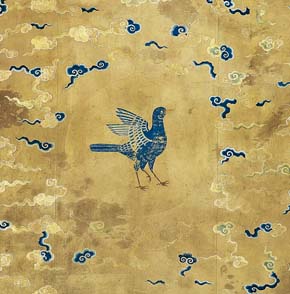 |
Three-Legged Crow China, Yuan dynasty, 13th to 14th century Embroidered silk In China, such a three-legged crow was believed to have lived in the sun.  |
|
Snake Eastern Mediterranean region or Italy, 1st century Glass
Snakes were revered as sacred symbols of water, because they live in damp marshes and near watersides. Their ability to repeatedly shed their skin also led to the belief that they had transformative powers to be reborn.
|
|
| Sacred Water in Garden (from cover page) Rome, 1st century Fresco A sphinx with large wings sits below a basin filled with water. This sacred beast, the protector of the pyramids and palaces, is casually placed here, transforming the fountain it guards into a miraculous spring that cultivates all life. This garden rich with verdant fruit-bearing plants and little birds manifests the divine nature of eternal life. |
|
The Water-Drawing Festival and Sacred Water Vessels |
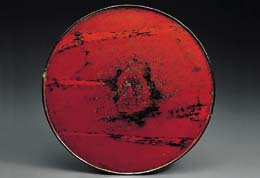 Nigatsudô Ritual Tray (Hinomaru Tray) Japan, Kamakura period, 13th century |
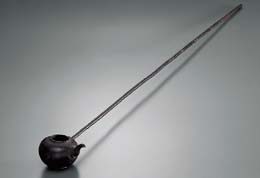 Water-Drawing Festival Perfumed Water Ladle Japan, Kamakura period, 13th century |
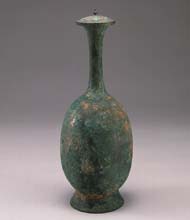 Water Jar China, Six Dynasties period, 6th century |
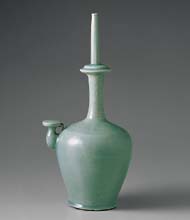 Sprinkler Incised with Waterfowls and Willows in Relief Korea, Goryeo dynasty, 12th century |
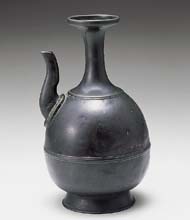 Buddhist Ritual Water Jar (Tôdaiji Temple-shape Jar) Japan, Kamakura period, 14th century |
